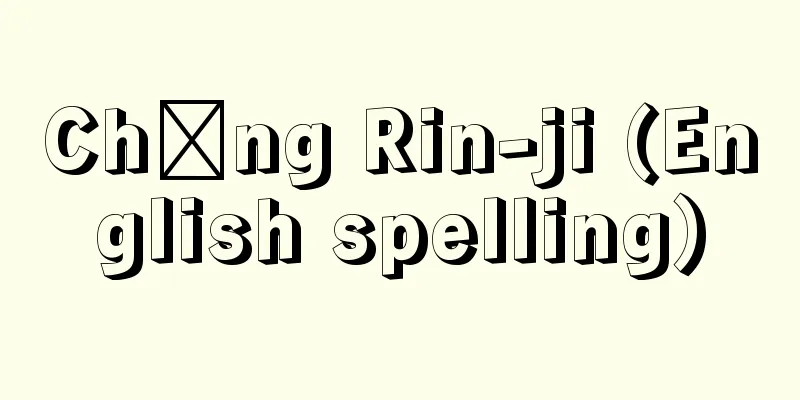River traffic

|
Transportation by boat along rivers. It is called water transportation in contrast to marine transportation that uses coasts or the open sea. For ocean-going ships, the river must be at least 70 meters wide and 12 meters deep, and for riverboats, the ideal depth is at least 2 meters. The longer the river that flows through the plains, the greater its utility. Small cargo ships for river use are called motorized sailing ships (with engines) or barges. Before the development of railroads and automobiles, rivers played an important role as a means of transportation in inland regions. Although their importance has declined since the development of railroads, in Europe and America, river transport is still used for large-volume cargo such as coal, oil, timber, and food that does not necessarily require express delivery but requires low freight rates. In Europe, the Rhine, Danube, Elbe, and Rhône rivers are connected by canals and are typical examples of river transport. The Volga-Don Canal, which opened in 1925, connects the Baltic Sea and the Black Sea, proving the importance of river transport in recent years. In Japan, Lake Biwa and the Yodo River have played important roles as river transportation routes since ancient times, and in the Edo period, the Tone River and the Arakawa River, which were centered around Edo, played important roles. For example, cargo ships and tea ships in the city of Osaka, and the "Kawagoe Night Boats" that left Kawagoe (Saitama Prefecture) at night and arrived in Edo the next morning, were very popular. However, due to geographical conditions, river transportation generally declined with the development of railways. Goods sent to wholesalers and small and medium-sized factories in big cities such as Tokyo and Osaka would arrive by ship at Osaka Port, Yokohama Port, or Tokyo Port, where they would be transferred to motorized sailing ships or barges and transported via river, but in recent years this practice has declined due to the development of automobiles. [Oshima Totaro] Source: Shogakukan Encyclopedia Nipponica About Encyclopedia Nipponica Information | Legend |
|
川を利用して行われる船による交通。沿岸や外海を利用する海運に対比して水運といい、外航船が通るには川幅70メートル以上、水深12メートル以上、川舟の場合でも水深2メートル以上が理想で、平野を流れる長い川ほど利用価値が大きい。河川用の小型貨物船を機帆船(発動機付き)または艀(はしけ)bargeとよんでいる。 鉄道や自動車が発達するまでは内陸地方の交通機関として重要な役割を果たしてきた。鉄道が発達してからは重要性が低下したとはいえ、ヨーロッパやアメリカにおいては、石炭、油、木材、食糧などのような、かならずしも急送を要しないで運賃の安いことを必要とする大量貨物が河川交通を利用している。ヨーロッパのライン、ドナウ、エルベ、ローヌ川などは運河でつながり、河川交通の代表例である。1925年に開通したボルガ・ドン運河はバルト海と黒海を連絡したもので、近年における河川交通の重要性を立証している。 日本においては、昔から琵琶(びわ)湖と淀(よど)川、江戸時代に入ってからは江戸を中心とし利根(とね)川、荒川などが河川交通路として重要な役割を果たした。たとえば、大坂の町のなかの上荷船・茶船、あるいは川越(埼玉県)を夜出発し、翌朝江戸に着く「川越夜舟」などは繁盛した。しかし、地形的な条件から、鉄道の発達とともに河川交通は全般的に衰退した。東京や大阪のような大都会にある問屋、中小の町工場などへ送り込まれる物資は、本船で大阪港、横浜港、東京港に着いて、ここで機帆船や艀に積み換え、河川を通じて搬入されるが、近年は自動車の発達により衰退してきた。 [大島藤太郎] 出典 小学館 日本大百科全書(ニッポニカ)日本大百科全書(ニッポニカ)について 情報 | 凡例 |
>>: River construction - Kasenkouji
Recommend
Glacier - Hyoga (English spelling)
When snow that has fallen and accumulated on the ...
Ballantyne, Robert Michael
Born: April 24, 1825, Edinburgh [Died] February 8,...
Germany Year Zero - German Reinen
《Italy》 Germania Anno Zero 》An Italian film from 1...
Ryohen - Ryohen
[Born] 1193/1194? Kyoto [Died] August 28, 1252 (Ke...
Chrysanthemum yezoense (English spelling) Chrysanthemum yezoense
…[Nitta Aya]. . . *Some of the terminology that m...
Antal Dorati
An American conductor of Hungarian origin. He stu...
Crossing the Kitayama Mountains
... The official road from the capital to Tosa se...
Burgers vector
...In this way, although the crystal is locally c...
Gaultier, D.
…But F. Couperin's works convey deep and true...
Cowshed - Gyusha
〘 noun 〙 A shed for keeping cows. A cowshed. ※Aoga...
Gosanro - Kyosanro
〘 noun 〙 A person who knows the ins and outs of th...
Commedia dell'arte
An Italian masked improvisational theater. Commedi...
Mr. Uchida
A feudal lord in the early modern period. He is sa...
Anan [town] - Anan
A town in Shimoina County in southern Nagano Prefe...
Climate magazine - Kikoushi
Along with systematic climatology, it forms part o...









